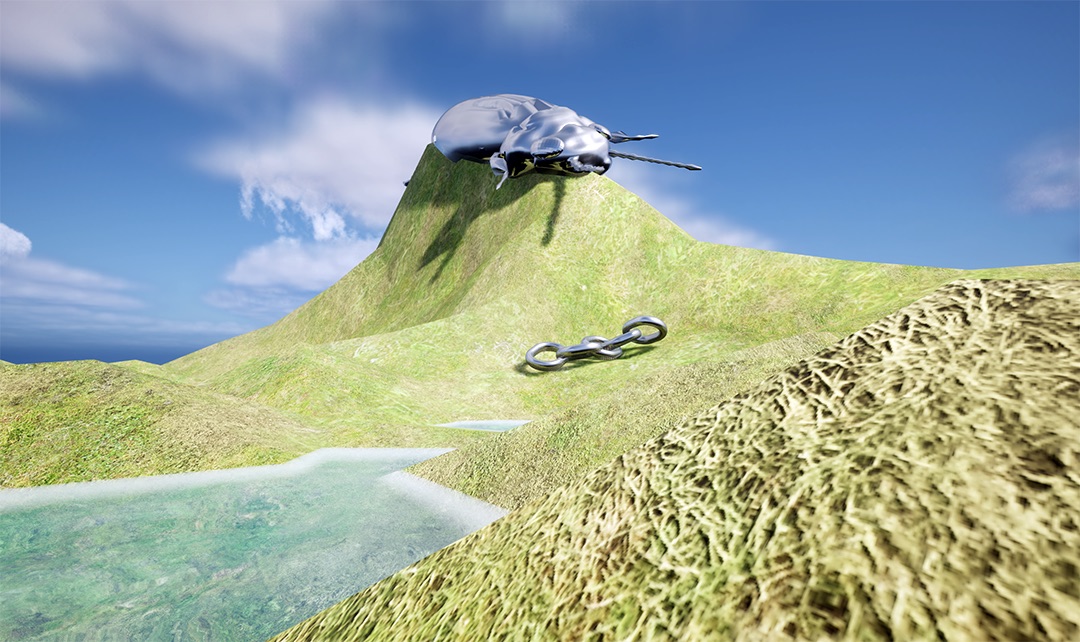Mollie Mia Murphy: Aithníonn Ciaróg, Ciaróg Eile

Launched as part of the Open Call 2024, the NCAD Gallery is delighted to present Aithníonn Ciaróg, Ciaróg Eile.
PROGRAMME
Opening: Thursday, 28 March 2024, 6PM—8PM, NCAD Gallery/ Foyer (after 8PM @ LoveTempo ). All are welcome to attend.
Exhibition Times: Mon—Fri, 28 March—12 April 2024, 11AM—6PM. (closed Sat & Sun).
Exhibition Walk-through: Wednesday, 10 Aril 2024, 1:15-1:45PM. Join final year Fine Art Media student Mollie Mia Murphy on a walk-through of her installation Aithníonn Ciaróg, Ciaróg Eile and public discussion on the work. No booking required. All are welcome to attend.
In the Irish language, the seanfhocal, or proverbial expression, ‘Aithníonn Ciaróg, Ciaróg Eile’ directly translates into English as ‘it takes a beetle to recognize a beetle’ – widely phrased in colloquial usage as ‘it takes one to know one’ or ‘birds of a feather flock together’.
Through her installation work Aithníonn Ciaróg, Ciaróg Eile, Mollie Mia Murphyweaves Irish oral history into visual forms to explore and lament on the effects of the early 19th century Ordnance Survey on Irish contemporary and environmental landscapes. Examining the ecological impact of historical colonialism on language, cultural and land use changes in Ireland – in viewing land as a commodity – the artist reveals a whimsical connection that is lost.
From her reading of Irish folklore recorded in institutions across Ireland – at the National Folklore Collection, the National Botanic Gardens, and the National History Museum Collection – the artist makes digital studies with reference to mythical stories of revenge, dominated by the feared natural phenomena and flora and fauna, on those who attempted to meddle with and wreak havoc on sacred natural resources.
In the Gallery foyer space, Aithníonn Ciaróg, Ciaróg Eile takes form in rapid prototyped sculptures, digital prints and virtual landscapes. Through her imagery, Murphy imagines the Moss Beetle, the Bidessus Minutissimus, a once widespread species found slowly lapping water over clean silt on river edges – now regionally extinct through land use change – finding a new habitat in a virtual storytelling. Employed as a symbolic device, the Bidessus Minutissimus assumes a hybridised organic and digital contemporary existence in the role of Nature, classified in terms of extractivism in a late stage of capitalist society.
Mollie Mia Murphy is a multi-disciplinary artist based in Dublin, primarily working in video and installation. She has been deeply affected by the worries of climate destruction. Growing up with news headlines including phrases such as ‘Climate Crisis’, ‘Wild Fires’, ‘Deforestation’ and more has inspired Murphy to take action through her artwork. Her work explores connections between the environment and the economy in Ireland. For Murphy, data has an invisible and commonly unrecognised impact on our earth. The use of technology in her art calls her own environmental footprint she creates into question. Murphy’s work is research-led with a focus on finding connections between religion, language and landscape. She aims to create discourse around social and cultural changes capable of making improvements to diminishing relationships to nature.
Dublin 8
